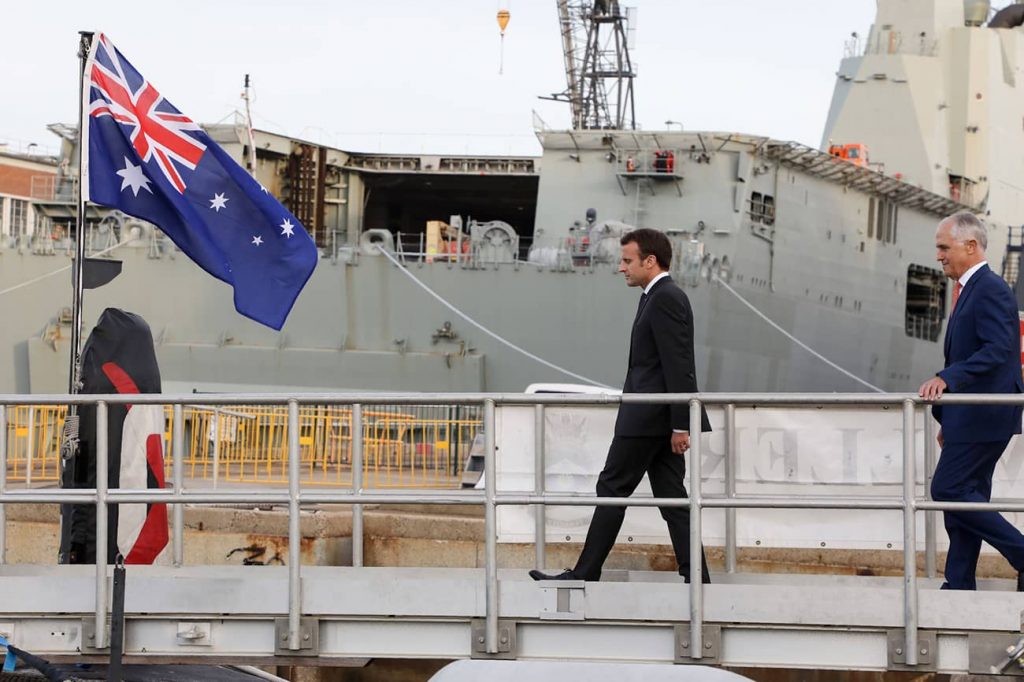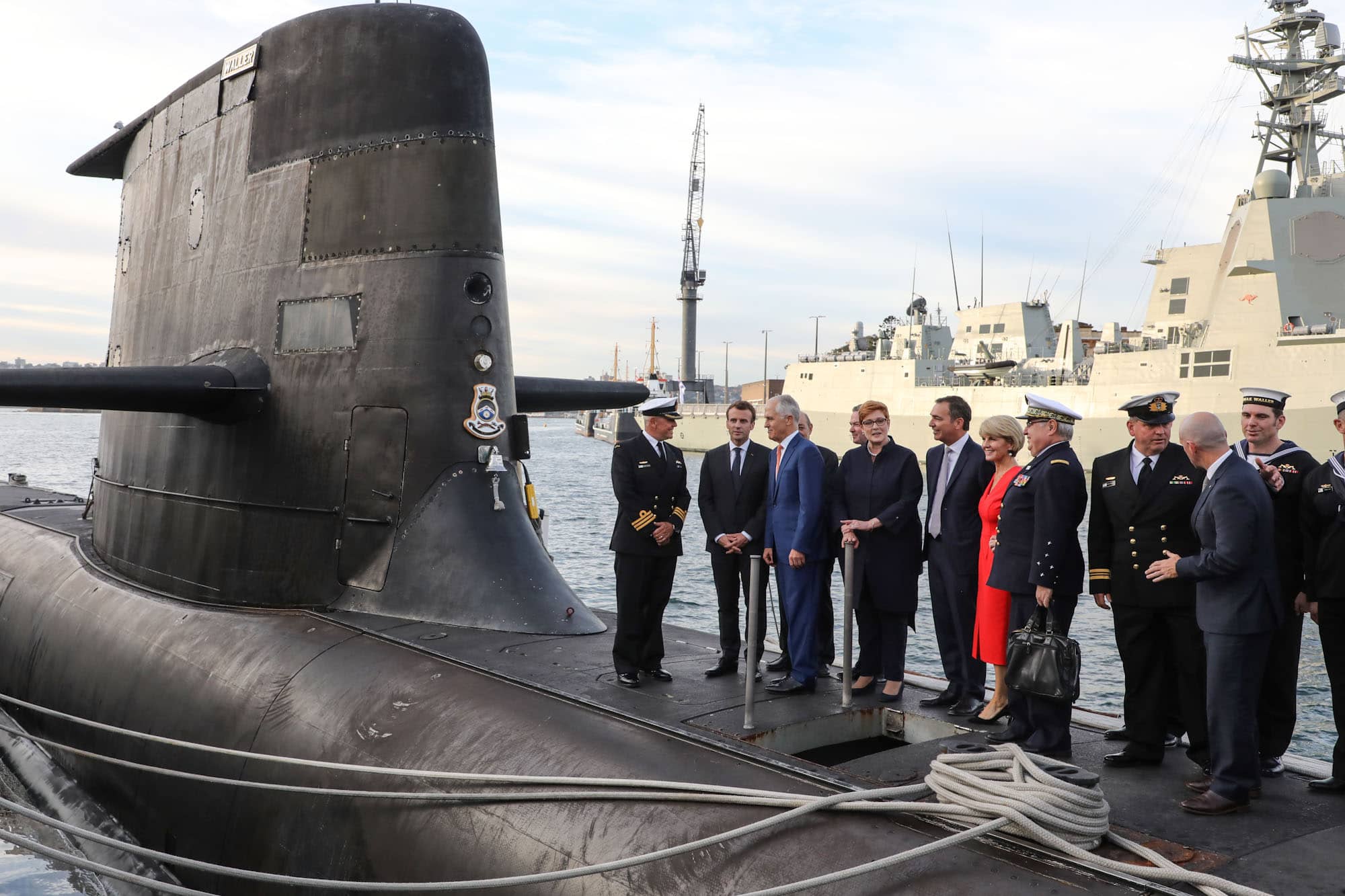The Australian government informed the French government on September 15, 2021 that it was withdrawing from a large signed contract to develop next generation conventional submarines. The Australian government then announced that it would instead be acquiring British or American nuclear-powered submarines to replace its current Collins class diesel electric submarines. This has created a diplomatic rift between Canberra and Paris.
The decision was taken for three reasons. Relations with the French were not good, and ongoing rancor over the terms and conditions of the contract were irritating powerful people in Canberra. The strategic environment has been rapidly deteriorating; although France is a marginal player in Indo-Pacific affairs, it has been closer to China than either London or Washington and Canberra saw it as a less than fully reliable strategic partner if push came to shove. Finally, Washington and London resolved to stand up to China and made it clear to Canberra that they see Australia as an indispensable strategic ally in the looming geostrategic confrontation.
I have been an observer of these developments for many years. Ten years ago, before any decision had been taken in Canberra on the next generation submarine capability, I was asked, as a special consultant, to run a series of workshops for the Submarine Institute of Australia (SIA) on the core issues involved. Those workshops equipped me to understand the series of developments that have since unfolded. This essay is written from that perspective.
Since the 1980s, Australia has labored under a law that prohibits the development of a nuclear industry within its borders. That has been one of two impediments to any idea of acquiring nuclear powered submarines. The other impediment was, until very recently, the US refusal to make them available. This impediment was suddenly removed of late, which precipitated the decision—given the dissatisfaction with the French deal—to make the radical shift to nuclear submarines. The lack of a nuclear industry, however, will still impede the operating and sustaining of such boats when they become available. That is an issue that remains to be tackled.
In the first SIA workshop, held at ANZAC House, in Melbourne, in 2011, the senior submariners made it clear that the Virginia class nuclear submarines, purchased from the US, would be the perfect solution to Australia’s maritime security needs—if they were available—but that the above two impediments seemed insuperable. Therefore, Australia would have to settle for conventional boats. The central focus from that point was to make the case—contested by various parties in both the armed services and the political class—that those conventional boats had to be long range ones.
Why long range? Because Australia is an enormous country, with an immense coastline and a vast maritime territory, as well as being a long way from where it seeks to operate its submarines. This is not true of any country in Europe or the Middle East to any appreciable extent. The boats had to be long range simply to get from their home bases to the South China Sea or further north, or to patrol the straits in the archipelago to the country’s north, or the enormous expanse of the South Pacific and Melanesia. They also needed to be able to remain on station for as long as possible and to be able to rotate.

Macron and Turnbull visit the HMAS Waller, a Collins-class submarine, in Sydney. Photo credit: Ludovic Marin/Abaca Press
Nuclear submarines are far better than conventional submarines because they are faster, quieter, and have vastly greater staying power on station than any conventional platform. Short of that, the Collins class submarines are designed to fill these roles to the greatest extent possible. They are very good at what they do—within conventional limits. There were problems in building and operating them and much controversy ensued; however, those problems were overcome and a great deal was learned in the process. The most practical and affordable option, at that time, would have been to proceed with a “son-of-Collins” conventional boat and keep the production lines operating.
That option was not exercised, in part, because of unresolved confusion concerning the Collins design and production process. It needs to be understood that some within the Navy, to say nothing of the other service arms, have been opponents of the submarine capability, at least as compared with surface platforms or other force structure priorities. The long delays and confusion regarding the design and building of the Collins class boats did not weaken that opposition; rather, it was further ramped up over contracting a foreign firm to design and build new boats. This opposition is expected to escalate to a whole new level over Australia’s decision, made so abruptly, to acquire nuclear submarines that will cost even more and take decades to bring into service.
Politics and ineptitude have long delayed a decision on the new generation of conventional boats. The rapidly deteriorating strategic environment of the past couple of years precipitated the creation of the AUKUS alliance between Australia, the UK, and the US for the Indo-Pacific region, and the decision to shift from conventional subs to nuclear ones. Stephen Smith, as minister of defense (2010–2013), pushed the decision off rather than taking the risk of becoming the target of political broadsides over what was bound to be a complex and controversial call. Tony Abbott, having become prime minister in 2013, made what he dubbed a “captain’s call” and declared Australia would buy Japanese Soryu-class conventional submarines. There was a hue and cry about not having had a proper tendering process and the decision was then overturned.
The bidding process that followed, under Prime Minister Malcom Turnbull (2015–2018), did involve competitive tendering. The German firm Howaldtswerke-Deutsche Werft (often abbreviated HDW) that is part of the ThyssenKrupp Marine Systems (TKMS) group, which is owned by ThyssenKrupp and headquartered in Kiel, was expected to win the bid, but it mishandled the bidding process. The Japanese put in a bid, but they were not used to selling for export in the arms market and were fairly easily outmaneuvered by the Europeans. The French did not expect to win but did so due to deft lobbying in Canberra and the German mistakes. The way in which the French won is important in understanding what went wrong afterward, which contributed to the decision of Scott Morrison (prime minister since 2018) to cancel the French contract and opt for nuclear submarines under the aegis of AUKUS.
The French Navy Group bidding team, led by Marie-Pierre de Baillencourt, hired a group of five Australians as part of its bid and gave them free rein to develop a marketing plan. De Baillencourt shielded them from the big boys in the French bureaucracy and defense industry establishment and enabled them to move adroitly. The moment their bid succeeded, however, the French team was shunted aside by a management group led by the Belgian Jean-Michel Billig. Billig and his team proceeded to alienate almost everyone at the Australian end with their arrogance and ignorance, which poisoned the relationship from the start and led to an eight-month delay in even signing-off on the partnership agreement.
Nonetheless, the deal could have worked. The French Barracuda-class conventional boats envisaged would have been state of the art, and there was a provision, after the first four or five platforms, to make a seamless shift to nuclear propulsion, using the French nuclear model, which is substantially different from the Anglo-American model. It was, therefore, perfectly possible to have stuck with the French deal, while announcing that the nuclear mutation would be confirmed and perhaps brought forward. That would have been far less disruptive to both the relations with France and force structure planning.
The chief criticisms of the decision to withdraw from the contract are that the decision was made too hastily, without critically evaluating its merits, and that the nuclear boats will take even longer to come into service than the Barracuda would have, which was already overly long. In a brewing crisis deemed likely to come to a head within the next three to ten years, what possible use could it be to contract for the acquisition of eight Virginia or Astute class nuclear submarines that would not enter service for decades?
To this there are several possible answers. First, Virginia or Astute class boats might be leased from our allies in advance of the built ones being brought into service. Second, the criticism overlooks the fact that in that three-to-ten-year time frame we will still have the Collins class boats. Third, many things besides just shifting to nuclear submarines are now being done to bolster both Australia’s defense capabilities and its operational cooperation with its key Anglophone allies. The nuclear submarines therefore are not the pivotal issue here. Fourth, all members of AUKUS are preparing themselves for potentially a 50-year contest with China for primacy in the Indo-Pacific. That contest, brilliantly analyzed by Rory Medcalf, director of the National Security College at the Australian National University in Canberra, in his Contest for the Indo-Pacific: Why China Won’t Map the Future (Latrobe University Press, Black Inc., 2020), is just beginning.
For some reason, Morrison’s announcement included the statement that there will be “no tinkering” with the US Virginia class model. That sounded a little odd, given several considerations. For one thing, Australia has tinkered with all conventional submarine models for decades in an effort to get a boat made for our specific and highly unusual requirements. Why make this declaration in advance? Secondly, there was supposedly some ambivalence about whether Australia would purchase the American or the British nuclear submarine. The statement could be taken as the prime minister tipping his hand. Thirdly, the Americans themselves are tinkering with the model and are likely to do further as they ramp up its modernization and production.
This prompts the question of whether Australia in fact should purchase the Virginia class or Astute class, the American or the British boats. There are several reasons for going with the American one. Firstly, the Virginia submarines have the same combat systems as the Collins class boats currently in Australia’s inventory, so transition would be seamless. The combat systems in the Astute class boats are very different. Secondly, the Americans are building 66 or more Virginia class boats, so adding eight for us will be straightforward. By contrast the British are building only a tiny number of Astute class boats, which increases the probability of cost overruns or long delays in production. Finally, in any conflict, we would be reliant on American supply chains, which is surely a compelling argument. Yet in certain respects the Navy would prefer the Astute class boats. For one thing, the Virginia class requires a crew of 140 compared with 85 for the Astute class and just 48 for the Collins class subs. Crewing has already been a challenge and shifting from six Collins to eight Virginias would require increasing the corps of submariners from 288 to 1120—a very large ramp-up. To attract and retain this complement of personnel will require a major adjustment to basing and recruitment. Most qualified or eligible recruits have grown up on the east coast, but the submarine tenders are on the west coast. That is a serious disincentive to potential recruits and an obstacle to long-term retention of personnel. There is time, however, for these issues to be thought through carefully and for adjustments to be made. The AUKUS revolution is just beginning.



